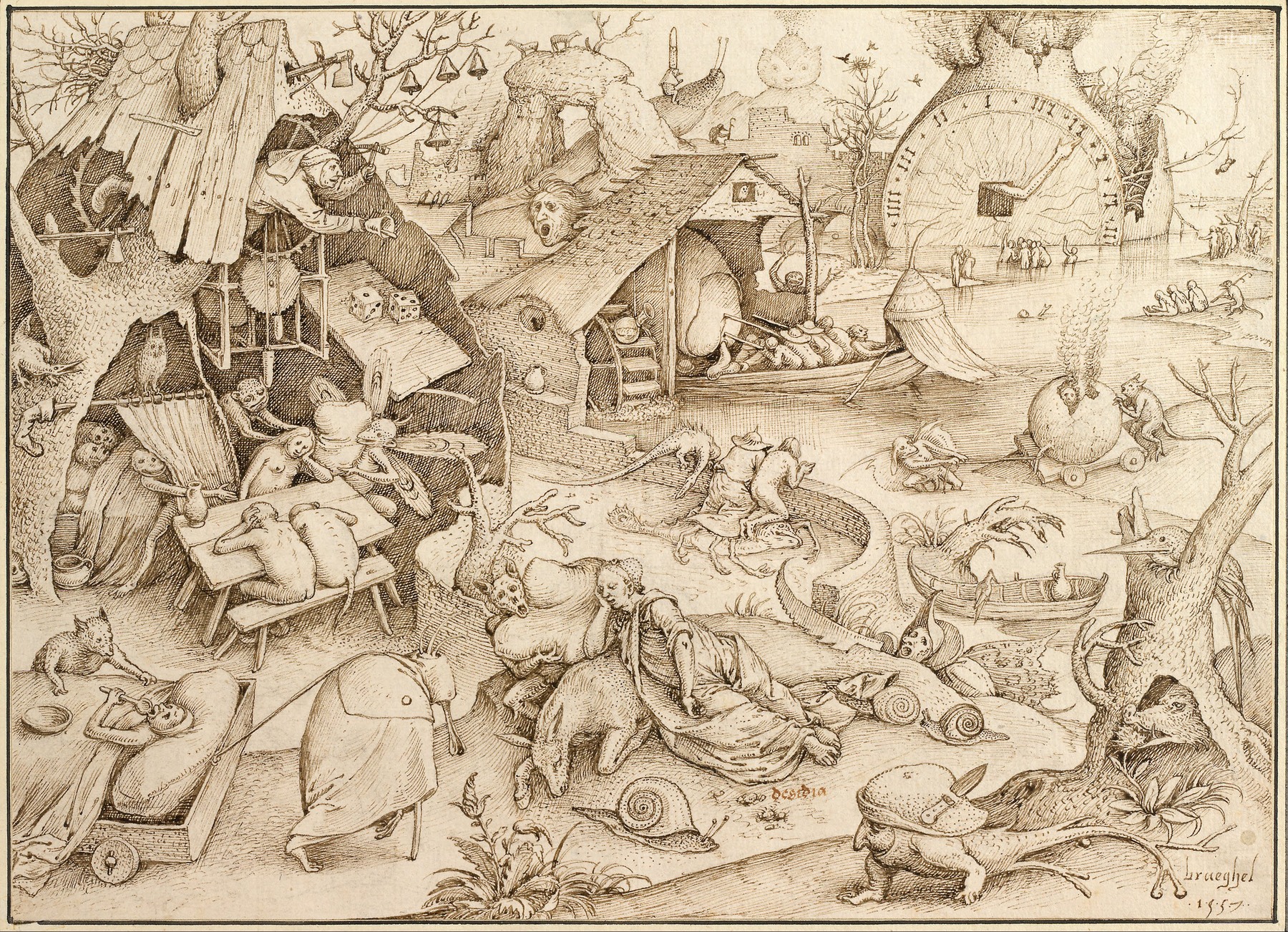
Art Appreciation
This intricate artwork by Pieter Bruegel the Elder is a vivid and surreal depiction of sloth, one of the seven deadly sins. The composition captivates with a cacophony of figures, animals, and whimsical machines all converging in a bizarre, dreamlike landscape. The tone is monochromatic, relying on precise hatching and delicate line work to conjure an atmosphere thick with allegory and irony. Tiny, detailed scenes unfold upon closer inspection—semi-human creatures lounging lazily, some suspended or entangled in various contraptions, others drifting leisurely through the landscape. The overarching feeling is one of lethargy and inertia, cleverly communicated through both forms and expressions.
Bruegel's mastery is evident in the harmonious yet chaotic arrangement; everything is connected via winding paths and fluid architectural elements, creating a labyrinth of indolence. The large clock face in the background ironically underscores the theme of wasted time, while peculiar hybrid creatures—part animal, part human—add layers of symbolic meaning and humor. The earthy, muted palette emphasizes the grim nature of sloth without resorting to overt darkness. Historical context enriches this work, as it belongs to Bruegel’s cycle on the seven deadly sins, reflecting the moralistic views of 16th-century Europe yet presented with playful imagination. This piece resonates emotionally, drawing viewers into a complex meditation on human frailty, and it stands as a testament to Bruegel’s genius in weaving narrative, satire, and fine detail into a single compelling image.